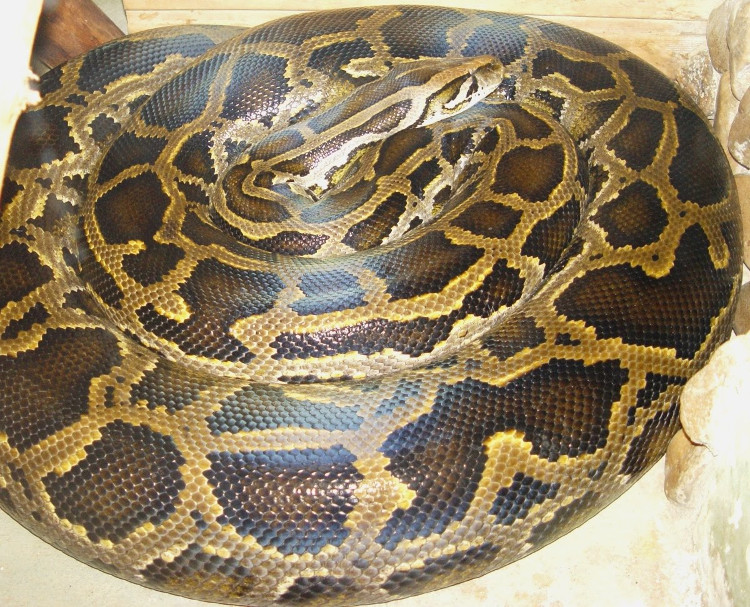The big bulging mechanism helps Burma digest its bait
The vital organs in Burmese pythons double in size after they swallow the giant prey.
An international team of scientists has discovered a mechanism that makes Burmese python organs significantly increase in size after eating, according to the International Business Times. They identified several genomes that could affect changes in python organ structure.
Burmese pythons are capable of fasting for a long time, when their metabolic and physiological functions are suspended and their internal organs shrink. But within 48 hours after swallowing the large prey, the size and function of Burmese python organs increased significantly to help it digest its prey. The weight of important organs, including the heart, liver, kidney and python, can increase by 40-100%.

Burmese Python is one of the world's largest snakes.(Photo: Wikimedia Commons).
In the study published in early May in the journal BMC Genomics, a group of international scientists compared gene expression in the heart, liver, kidney and intestines of Burmese pythons during the time before and after eating. They want to understand which genes play an important role and how much they affect.
The researchers looked at the fasting gene expression, fasting one day after eating and four days after eating. They sequenced the genome in these three states and identified 1,700 genes in pythons that exhibited different pre- and post-feeding.
Later, the team analyzed data to find the most important set of genes that promote changes in the inner organs of python bodies. The results showed that some genomes (mTOR, PPAR / LXR / RXR and NRF2) encode proteins that activate signaling in tissues, leading to the recovery of python internal organs.
Burmese pythons are among the largest snakes on Earth, some of which can be as long as 4 meters. They mainly live in the Indian and Indonesian forests, but are also introduced into the wilderness of Florida, USA, through pet trade and are considered invasive species.
Burmese Burmese in the southern swamp of Florida.(Video: AFP).
Burmese pythons can eat birds as well as other reptiles and are very fond of large mammals. In Florida, this animal often eats cattle, crocodiles and adult deer.
The study of biotic mechanisms in pythons may suggest that scientists find the best way to treat future diseases of human organs.
- Why do crocodiles swallow stones in the stomach?
- Watch the fish 'suck' the prey
- 7 years to digest gum!
- The predatory species has the most perfect trap mechanism: Super-long tassel, straight-edged 'mouth' full of acid bait
- New discovery about drug addiction
- Animal photos last week: Male fish lures female bait bait
- Mechanism of enzyme action helps to control cancer
- Crocodile throws prey like toys
- The birth of the Minute Repeater mechanism
- Understand the operating mechanism of familiar objects in just one photo
- Sharks are broken when they are bait
- Why do we hear whispers?
 Animal 'suffering' after hibernation
Animal 'suffering' after hibernation Why do goats climb well?
Why do goats climb well? Scientists were surprised to see chimpanzees eating turtles
Scientists were surprised to see chimpanzees eating turtles Giant catfish died deadly due to drought in Thailand
Giant catfish died deadly due to drought in Thailand